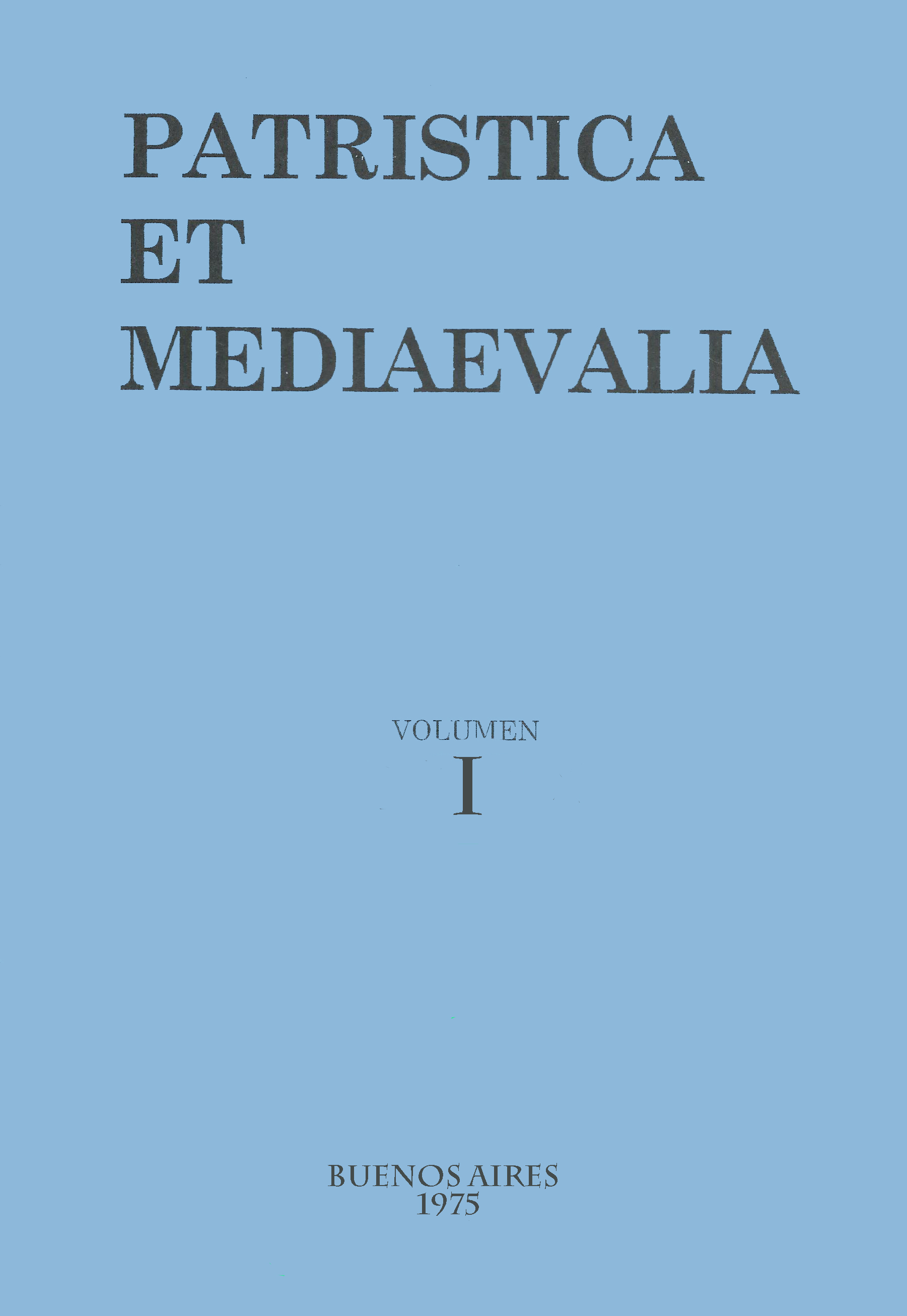The Components of the Divine Image in the Man According to the "De hominis opificio” of Gregory of Nyssa
Abstract
In chapters IV and V of the treatise De hominis opificio by Gregory of Nyssa, the relationship between man and God is set out within a complex and eloquent frame of reference: the creation of humanity insofar as it shows the royal power enjoyed by man. Man is presented here as an image. And Gregory gives him three groups of properties: (i) royalty, freedom, virtue, immortality and justice; (ii) purity, impassivity, beatitude, freedom from all evil; (iii) Logos, diánoia, agápe. Thus, in this work we analyze, in detail, each of these qualities that Gregory attributes to the image in chapters IV and V of De hominis opificio.Downloads
References
Balas, D. L. (1966). Metousía Theoû. Roma: Herder.
Bernard, R. (1952). L’image de Dieu d’après St. Athanase. Paris: Aubier.
Boulgakof, S. (1943). Du Verbe Incarné. Paris: Aubier.
Casel, O. (1963). El hombre auténtico. Madrid: Guadarrama.
Cherniss, H. F. (1930). The Platonism of Gregory of Nyssa. Berkeley: University of California Press.
Daniélou, J. (1953). Platonisme et Théologie mystique. Paris: Aubier.
Dodd, C. H. (1970). The interpretation of the Fourth Gospel. Cambridge: Cambridge University Press.
Festugière, A. J. (1950). L’enfant d’Agrigente. Paris: Les Iles d’Or.
Festugière, A. J. (1967). Contemplation et vie contemplative selon Platon. Paris: Vrin.
Frank-Duquesne, A. (1947). Cosmos et Gloire. Paris: Vrin.
Frank-Duquesne, A. (1951). Création et Procréation. Paris: Les éditions de Minuit.
Gaith, J. (1953). La conception de la liberté chez Grégoire de Nysse. Paris: Vrin.
Jaeger, W. (1954). Two rediscovered works of ancient Christian literature: Gregory of Nyssa and Macarius. Leiden: Brill.
Leys, R. (1951). L’image de Dieu chez Grégoire de Nysse. Bruxelles: L’Edition Universelle / Paris: Desclée De Brouwer.
Lossky, V. (1944). Essai sur la Théologie mystique de l’Eglise d’Orient. Paris: Aubier.
Lossky, V. (1967). À l’image et à la ressemblance de Dieu. Paris: Aubier.
Lot-Borodine, M. (1970). La déification de l’homme selon la doctrine des Pères grecs. Paris: Ed. Du cerf.
Quell, G. & Stauffer, E. (1933). Agapáo. ThWNT, 1, 20-55.
Voelker, W. (1955). Gregor von Nyssa als Mystiker. Wiesbaden: Steiner.
1. The authors who publish in this magazine accept the following conditions:
-
They retain the copyright and grant to the magazine the right of the first publication, with the work registered under the Attribution-ShareAlike 4.0 International License that allows third parties to use what is published as long as they mention the authorship of the work and the first publication in this magazine.
-
They can make other independent and additional contractual agreements for the non-exclusive distribution of the version of the article published in this magazine (eg. include it in an institutional repository or publish it in a book) provided that they clearly indicate that the work was first published in this journal.
-
They are allowed and recommended to publish their work on the Internet (for example on institutional or personal pages).
2. AutoArchive Conditions. Authors are allowed and encouraged to distribute post-print electronic versions of their manuscripts because it promotes their circulation, a possible increase of quotation and a major reach among the Academic community. Color RoMEO: blue.













